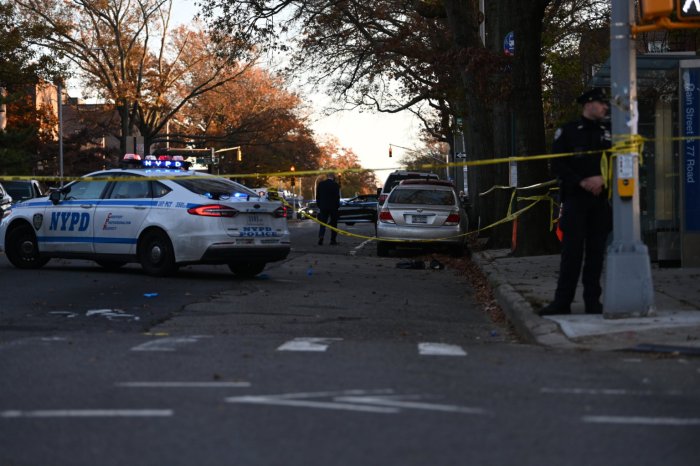By Alexander Dworkowitz
In an attempt to more thoroughly document the health impact of the destruction of the World Trade Center, Queens College began a study Monday of day laborers who cleaned buildings in downtown Manhattan after Sept. 11.
Unlike previous studies that focused on firefighters and other workers at Ground Zero, the Queens College study is aimed at day laborers, many of whom are undocumented workers, immigrants, speak no English and lack health insurance.
“They weren’t licensed contractors trained in the removal of toxic substances,” said Paul Bartlett, a research associate at the Center for Biology of Natural Systems, a research institute of Queens College in Flushing. “We’re focusing on the people who we think are in the greatest need and underserved.”
The study of day laborers comes amid several other studies of the health effects of the World Trade Center collapse, which includes a Mount Sinai School of Medicine study of pregnant women who were downtown on Sept. 11 and a New York Academy of Medicine attempt at creating a registry of every person who has worked at ground zero.
Since the day laborers were not trained to deal with the cleaning of the substances that covered the streets and buildings of downtown Manhattan, many of them may have exposed themselves to harm, said Bartlett.
Bartlett added that the dust and powder that covered Lower Manhattan as well as parts of Brooklyn, was comprised of cement chips, powdered fiberglass, lead, asbestos and, in minute quantities, human remains.
In order to conduct the study of the workers, Queens College received nearly $100,000 from the September 11 Fund to test day laborers at a medical unit stationed in Lower Manhattan at Broadway and Barclay Street, said Bartlett. The unit began testing workers Monday and will be stationed at the corner from 8 a.m. to 8 p.m. over the next two to three weeks.
Dr. Ekaterina Malievskaia of the Center for Biology of Natural Systems is currently working at the medical unit, administering a health questionnaire and blood, urine and respiratory tests to day laborers.
Malievskaia said she hopes 200 day laborers who helped clean up Lower Manhattan will come to the unit for testing. Well over 200 day laborers are estimated to have cleaned Lower Manhattan, but Malievskaia said 200 should be enough for an effective study.
Malievskaia said she believed the study would indicate that the workers’ health was negatively affected by the post-Sept. 11 cleanup.
“My intuition is that yes, they were very poorly protected,” she said. “They probably don’t have a clue what they were exposed to.”
The results of the study will be published in several months, said Malievskaia.
Most of the laborers are Hispanic, but some are black and others Polish, she said.
Oscar Paredos, the director of the Long Island City-based Latin American Workers Project, has been working with some of the day laborers since his organization was founded four years ago.
Many of the workers come from Queens, said Paredos, mostly in the areas of Corona, Woodside and Long Island City. For example, on 69th Street and Roosevelt Avenue in Woodside, many of the laborers spend their mornings waiting to be picked up for work.
Paredos shared Malievskaia’s concern for the workers.
“We talked with the workers about the conditions and we realized they don’t have any training about the chemical they use in those places and any equipment to protect themselves,” said Paredos.
Paredos’ organization often gets involved in fighting for higher wages for the workers in addition to their health.
He said some workers have complained to him of nosebleeds and strong coughs.
“They worked under very dangerous conditions,” said Paredos.
Reach reporter Alexander Dworkowitz by e-mail at Timesledger@aol.com or call 229-0300 Ext. 141.




























